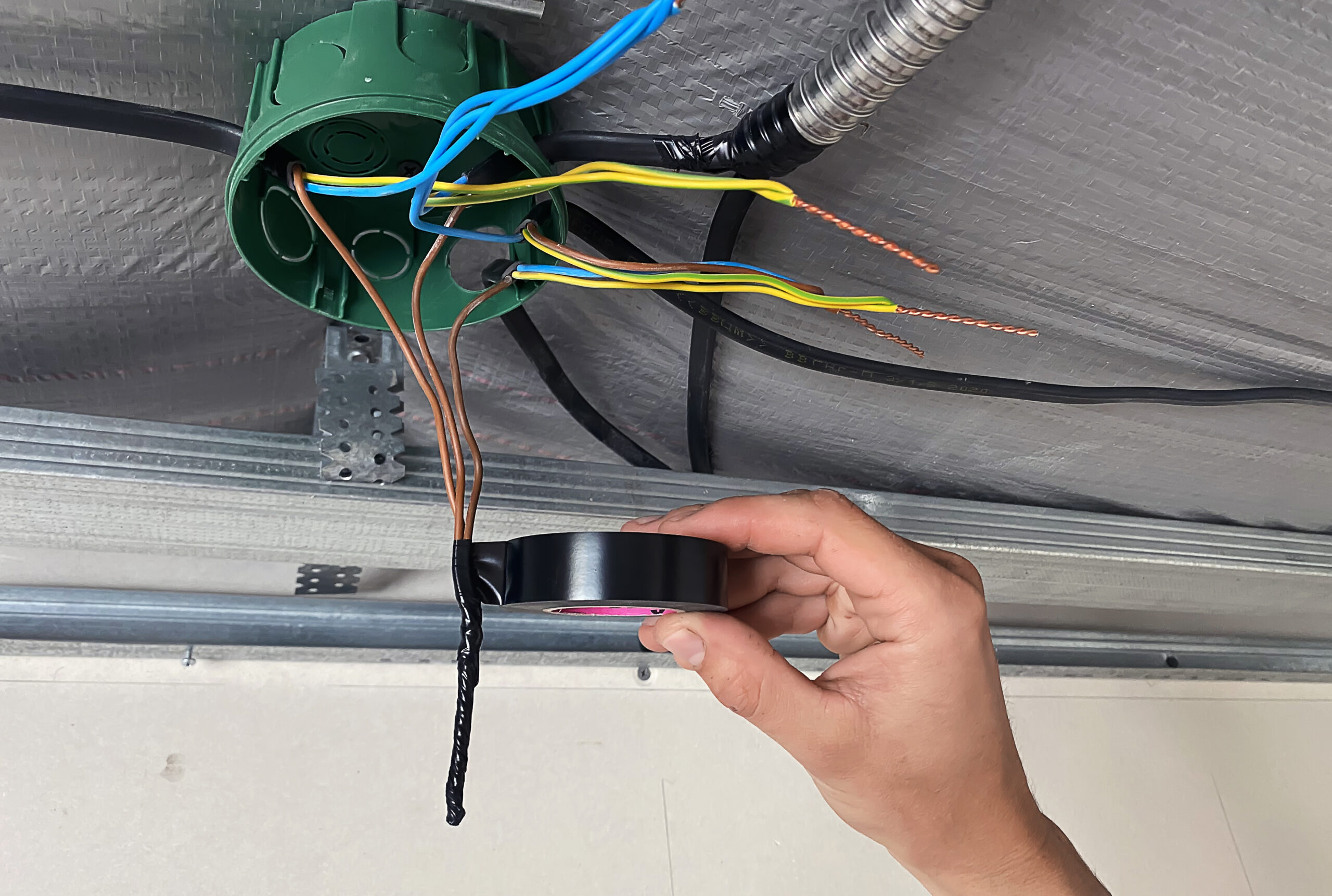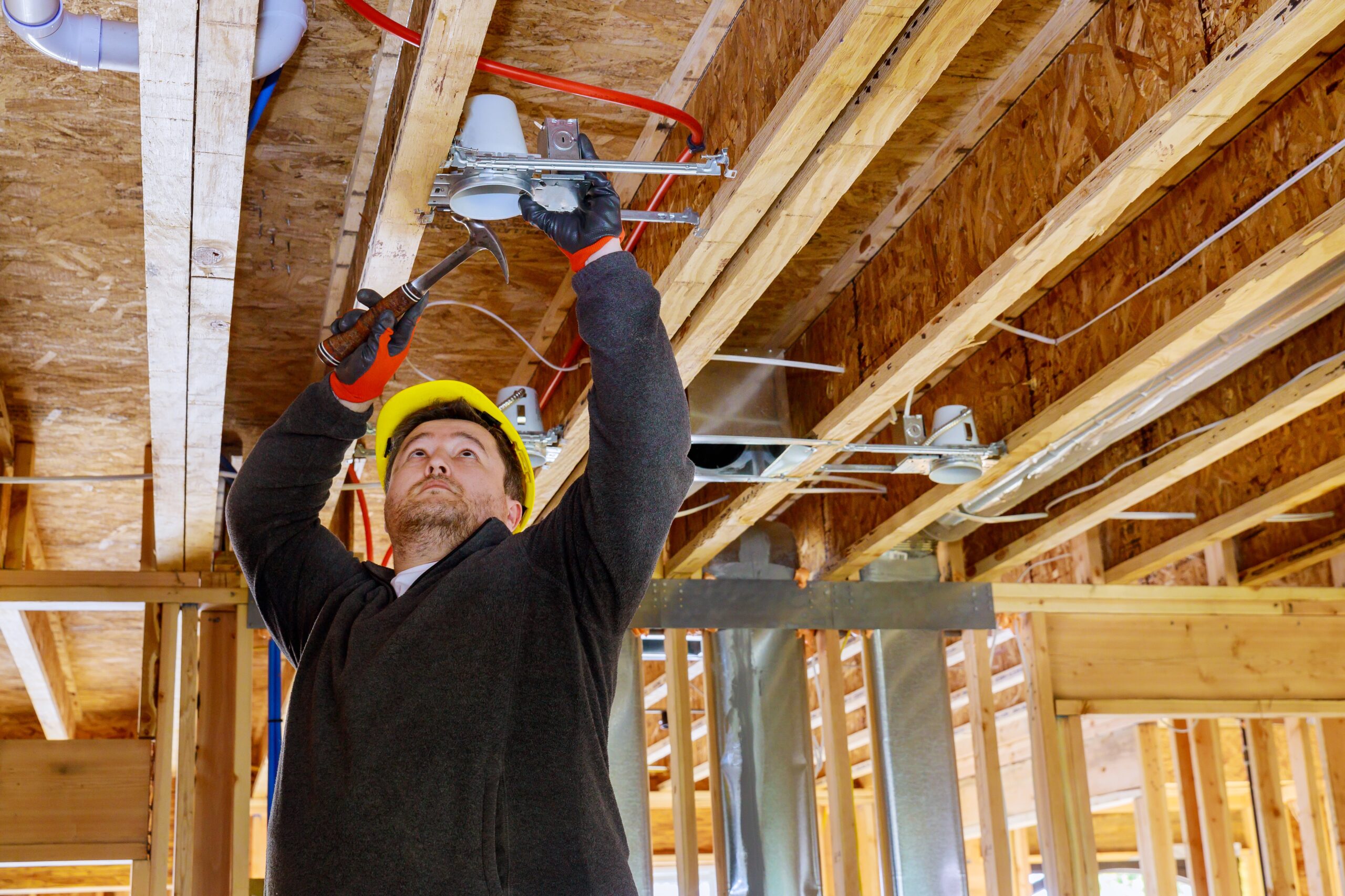Electrical systems are critical to modern living, powering everything from essential appliances to advanced smart home technologies. However, if your home was built before the 1950s, it might still rely on knob and tube wiring, a once-standard electrical system now considered outdated and unsafe. While this method of wiring was an innovation in its time, it’s no longer suitable for today’s high energy demands or modern safety standards.
But how dangerous is knob and tube wiring, and when should you consider upgrading? This comprehensive guide will explore the risks associated with knob and tube wiring, the warning signs that indicate an upgrade is overdue, and the steps involved in transitioning to a safer, more efficient electrical system. With this information, you can make informed decisions to protect your home and loved ones.
What Is Knob and Tube Wiring?
Knob and tube wiring (K&T) was the standard method ofelectrical installation in North America from the late 1800s to the mid-1900s. It derived its name from the ceramic knobs used to support wires and the ceramic tubes that guided them through walls and joists. While considered a breakthrough in its day, K&T lacks the safety features and capacity of modern electrical systems.
Key Characteristics of Knob and Tube Wiring:
- Single Insulation: The wires are insulated with rubberized cloth, which degrades over time, exposing live wires.
- No Grounding: This system lacks a ground wire, increasing the risk of electric shocks and electrical fires.
- Low Capacity: Designed for basic lighting and small appliances, K&T wiring cannot handle today’s high electrical demands.
Homes with knob and tube wiring often struggle to support the energy needs of modern appliances, making an upgrade essential for safety and efficiency.
How Dangerous Is Knob and Tube Wiring?

Although knob and tube wiring may still function in some older homes, its age and outdated design present serious hazards. Homes relying on this system are at increased risk of electrical fires, shocks, and insurance complications.
Fire Hazards
- Degraded Insulation: Over time, the cloth insulation becomes brittle and may expose wires, creating a fire hazard when it comes into contact with flammable materials like wood or insulation.
- Overheating: Knob and tube wiring was not designed for modern electrical loads, leading to overheating and a higher likelihood of fire.
Shock Risks
- No Ground Wire: Without grounding, excess electricity has no safe path to dissipate, significantly increasing the risk of electric shocks.
- Exposed Wires: Frayed or damaged wires are more likely to shock individuals or ignite nearby materials.
Insurance Challenges
- High Premiums: Many insurance companies consider homes with knob and tube wiring to be high-risk, leading to increased premiums.
- Limited Coverage: Some insurers refuse to provide coverage altogether unless the wiring is replaced.
The dangers posed by knob and tube wiring are not just theoretical—they’re real and well-documented, making it imperative for homeowners to address these risks.
Signs You Need to Upgrade Knob and Tube Wiring
If your home still relies on knob and tube wiring, it’s crucial to recognize the signs that an upgrade is necessary. Ignoring these signs could lead to safety hazards, higher energy bills, or costly repairs.
Common Signs of Wiring Issues
- Flickering or Dimming Lights: These issues often indicate unstable electrical connections caused by degraded or damaged wiring.
- Burning Smell: A burning smell near outlets, switches, or walls could indicate overheating wires, requiring immediate attention.
- Frequent Blown Fuses or Tripped Breakers: An overloaded electrical system struggles to meet your home’s energy demands, pointing to outdated wiring.
- Visible Damage: Exposed wires, brittle insulation, or missing ceramic components are clear signs of wear and tear.
Additional Indicators
- Outdated Outlets: Homes with knob and tube wiring often have two-prong outlets, which lack grounding and are incompatible with many modern devices.
- High Energy Bills: Inefficient wiring wastes electricity, leading to higher utility costs.
Recognizing these warning signs early can prevent more severe issues, such as electrical fires or complete system failures.
Why Upgrade Knob and Tube Wiring?
Upgrading knob and tube wiring is not just about meeting modern standards—it’s about ensuring the safety, efficiency, and value of your home. Here’s why an upgrade is essential.
Benefits of an Upgrade
- Improved Safety: Modern wiring systems include grounding, better insulation, and higher capacity to handle today’s electrical loads.
- Lower Insurance Costs: Many insurers offer better rates for homes with updated wiring, reducing overall costs.
- Enhanced Energy Efficiency: Upgrading eliminates energy waste associated with outdated wiring, lowering electricity bills.
- Increased Home Value: A modern electrical system is a significant selling point for potential buyers.
By replacing knob and tube wiring, you can protect your home and family while enjoying long-term financial benefits.
Steps to Upgrade Knob and Tube Wiring
Upgrading from knob and tube wiring requires professional assistance to ensure safety and compliance with electrical codes. Here’s what the process typically involves:
Step 1: Electrical Inspection

- What Happens: A licensed electrician evaluates the condition of your wiring, identifies problem areas, and determines the scope of the upgrade.
- Why It’s Necessary: Inspections help plan the project and ensure no critical issues are overlooked.
Step 2: Obtain Necessary Permits
- Importance: Electrical work must comply with local building codes, and permits ensure the project meets safety standards.
- How It’s Done: Work with your electrician to secure permits before starting the upgrade.
Step 3: Replace Wiring
- Actions: Old wiring is carefully removed and replaced with modern systems, such as copper wiring with grounded circuits.
- Consider Panel Upgrades: If yourelectrical panel is outdated, upgrading it during this process ensures compatibility with modern wiring.
Step 4: Test the System
- Purpose: After installation, electricians test the new system to verify its safety and functionality.
- What’s Checked: Grounding, circuit balance, and adherence to local codes.
Following these steps ensures a seamless transition from knob and tube wiring to a safer, more efficient system.
Costs of Upgrading Knob and Tube Wiring
Upgrading knob and tube wiring is an investment in your home’s safety and efficiency. Costs vary based on factors such as the size of your home, the complexity of the project, and your location.
Estimated Costs
- Small Homes: $4,000–$6,000 for a typical upgrade.
- Medium Homes: $6,000–$10,000 depending on the extent of the wiring replacement.
- Large Homes: $10,000–$20,000 for a complete overhaul.
While the upfront expense may seem high, the benefits of improved safety, lower utility bills, and increased home value make it a worthwhile investment.
Essential Key Takeaways You Should RememberKey Takeaways
Knob and tube wiring, while once revolutionary, is now a safety and efficiency liability in modern homes. As explored in this article, the risks associated with outdated systems—such as fire hazards, electric shocks, and insurance challenges—underscore the importance of addressing this issue. If your home still relies on knob and tube wiring, recognizing the warning signs and taking proactive steps to upgrade can prevent costly repairs, improve energy efficiency, and enhance safety. The answer to “how dangerous is knob and tube wiring”is clear: it poses significant risks that should not be ignored.
Looking ahead, the growing demand for energy-efficient and safer electrical systems will make upgrades even more essential for homeowners. Investing in modern wiring not only ensures compliance with current standards but also adds value and peace of mind. Have you encountered challenges with knob and tube wiring or completed an upgrade? Share your experiences or questions in the comments below to join the conversation and help others navigate this important issue.
People Also Ask
Is it legal to have knob and tube wiring in a home?
Yes, it’s legal, but most insurers and electricians recommend replacing it due to safety concerns.
Can the knob and tube wiring be repaired instead of replaced?
Repairs are possible, but they’re a temporary solution. Replacement is the safest and most cost-effective option.
Does knob and tube wiring affect home value?
Yes, homes with outdated wiring often sell for less due to safety concerns and the cost of future upgrades.
How do I know if my home has knob and tube wiring?
Look for ceramic knobs and tubes in your basement, attic, or walls, or consult a licensed electrician.
Can I upgrade the knob and tube wiring myself?
No, electrical upgrades should always be performed by a licensed electrician to ensure safety and compliance with codes.
Your Trusted Partner for Safe and Efficient Wiring Solutions
Don’t let outdated knob and tube wiring compromise your home’s safety and efficiency. At Boca Electrical Services, Inc., we specialize in inspecting, upgrading, and modernizing old electrical systems to meet today’s safety standards. Explore the tools and resources mentioned in this article, or visit the Softlist website for additional insights on maintaining a safe and efficient home. For personalized recommendations or to schedule a free comprehensive home safety inspection, call us at +1 561-235-2513or visit us at 158 NW 16th St #2, Boca Raton, FL 33432today.
With over 38 years of combined experience serving Boca Raton and the South Florida region, our team is dedicated to delivering reliable, customer-focused electrical solutions. Whether you need a full wiring upgrade, electrical panel enhancements, or expert advice on improving your system, we’re here to help. Protect your home and loved ones—contact Boca Electrical Services, Inc. now to ensure your electrical system is safe, efficient, and built to last.